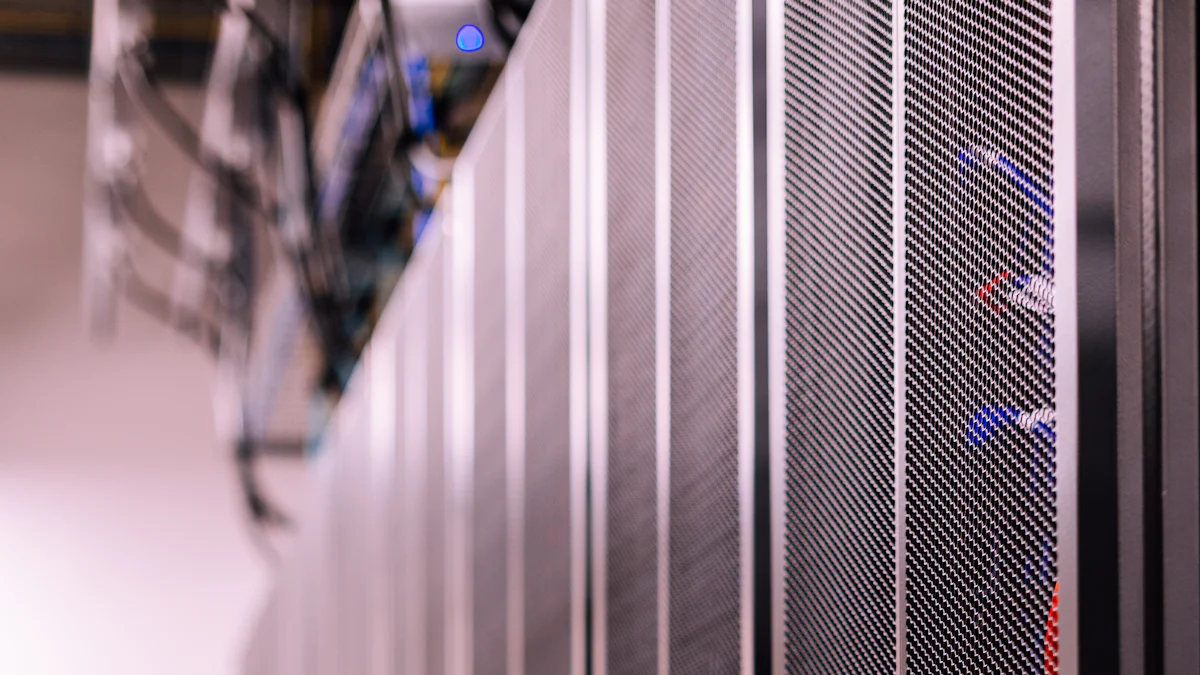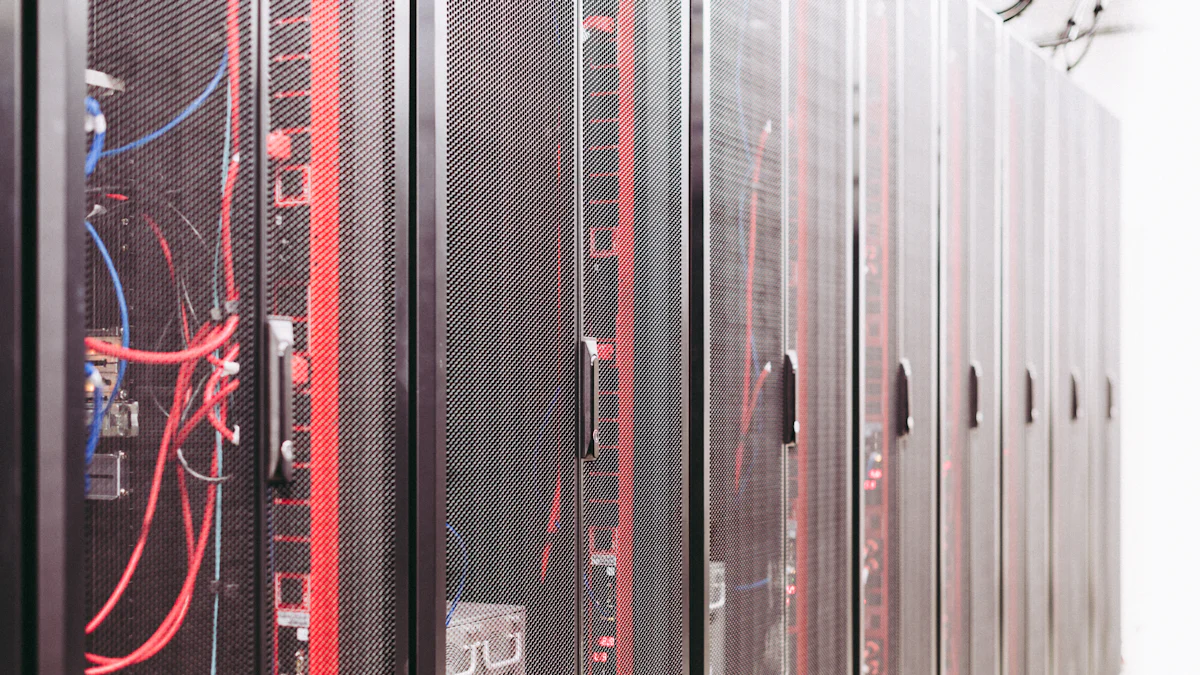
A Metered PDU serves as a critical tool in modern power management. It enables precise monitoring of electrical metrics, ensuring efficient energy use. In IT environments, its real-time data tracking supports load balancing and prevents power issues. Unlike a basic unit, this Smart PDU enhances operational reliability and optimizes resource allocation.
Key Takeaways
- A Metered PDU shows live power use, helping managers act fast to keep systems running well.
- Watching power closely with a Metered PDU stops overloads, saves energy, cuts costs, and helps the environment.
- Picking the right PDU, like metered or switched, is key for good power control in IT setups.
Key Features of a Metered PDU
Real-time monitoring of electrical metrics
A Metered PDU provides real-time insights into power usage, enabling administrators to monitor electrical metrics with precision. This feature ensures that IT environments maintain optimal performance by identifying irregularities as they occur. Administrators can access live data through integrated displays or remote management tools, allowing them to make informed decisions quickly. Real-time monitoring also supports proactive maintenance, reducing the risk of unexpected power failures.
Metrics tracked: voltage, current, power factor, and energy consumption
The advanced capabilities of a Metered PDU allow it to track essential electrical parameters. These include voltage, current, power factor, and energy consumption. Voltage monitoring ensures that connected devices receive stable power, while current tracking helps identify potential overloads. Power factor measurements provide insights into the efficiency of power usage, and energy consumption data aids in long-term planning. By offering detailed metrics, the device empowers IT teams to optimize energy distribution and maintain system reliability.
Importance of accurate power monitoring for efficiency
Accurate power monitoring plays a crucial role in achieving energy efficiency. A Metered PDU delivers precise data, enabling administrators to balance loads effectively and prevent overloading. This accuracy minimizes energy waste and reduces operational costs. Additionally, it supports compliance with energy regulations and sustainability goals. By leveraging accurate monitoring, organizations can enhance their power management strategies and ensure uninterrupted operations.
Types of Metered PDUs
Inlet-metered PDUs
Inlet-metered PDUs monitor the power entering the unit. These devices provide detailed insights into the total energy consumption of connected equipment. By measuring the input power, they help administrators assess the overall power usage of a rack or cabinet. This type of PDU is particularly useful in environments where tracking the total load is critical for capacity planning. Inlet-metered PDUs often integrate with data center infrastructure management (DCIM) tools, enabling seamless monitoring and reporting. Their ability to measure power at the source makes them an essential component for maintaining energy efficiency and preventing overloading.
Outlet-metered PDUs
Outlet-metered PDUs offer monitoring at the individual outlet level. This feature allows administrators to track the power consumption of specific devices connected to the PDU. By providing granular data, outlet-metered PDUs enable precise load balancing and energy optimization. They are ideal for environments with diverse equipment, where understanding the power usage of each device is crucial. These PDUs also support remote monitoring, giving IT teams the ability to manage power distribution from anywhere. The detailed insights provided by outlet-metered PDUs enhance operational efficiency and simplify troubleshooting.
Use cases for each type in IT environments
Inlet-metered PDUs are well-suited for data centers and server rooms where monitoring the total power load is a priority. They help administrators allocate power resources effectively and avoid exceeding capacity limits. Outlet-metered PDUs, on the other hand, are ideal for environments with mixed equipment, such as research labs or multi-tenant facilities. Their ability to monitor individual devices ensures accurate billing and efficient energy use. Both types of PDUs play a vital role in maintaining a reliable and efficient power infrastructure.
Benefits of Using a Metered PDU
Improved energy efficiency and cost savings
A Metered PDU helps organizations achieve energy efficiency by providing precise data on power usage. Administrators can identify energy-intensive devices and optimize their operation. This reduces unnecessary power consumption and lowers utility bills. By tracking energy consumption in real-time, businesses can implement strategies to minimize waste. Over time, these measures contribute to significant cost savings. Additionally, the ability to monitor energy usage supports compliance with sustainability initiatives and energy regulations.
Enhanced power monitoring and load balancing
Effective power monitoring ensures that IT equipment operates within safe limits. A Metered PDU enables administrators to track electrical metrics and distribute loads evenly across circuits. This prevents overloading and extends the lifespan of connected devices. Load balancing also improves the reliability of IT systems by reducing the risk of power disruptions. With detailed insights into power distribution, administrators can make informed decisions to enhance system performance. The ability to monitor power remotely further simplifies management and ensures uninterrupted operations.
Prevention of overloading and downtime
Overloading can lead to equipment failure and costly downtime. A Metered PDU mitigates this risk by providing real-time alerts when power usage approaches critical thresholds. Administrators can take immediate action to redistribute loads or shut down non-essential devices. This proactive approach prevents damage to equipment and ensures continuous operation. By maintaining a stable power environment, organizations can avoid disruptions and protect their IT infrastructure. The reliability offered by a Metered PDU is essential for maintaining business continuity.
Metered PDUs vs. Switched PDUs

Key differences in functionality
Metered PDUs and Switched PDUs serve distinct purposes in power management. A Metered PDU focuses on monitoring electrical metrics such as voltage, current, and energy consumption. It provides real-time data to help administrators optimize energy usage and maintain system reliability. In contrast, a Switched PDU offers remote control over individual outlets. This functionality allows administrators to power devices on or off without physical access to the unit. While Metered PDUs excel in tracking power usage, Switched PDUs prioritize control and flexibility in managing connected equipment.
When to choose a Metered PDU
A Metered PDU is ideal for environments where precise power monitoring is essential. Data centers, server rooms, and IT facilities benefit from its ability to track energy consumption and prevent overloading. Organizations focused on energy efficiency and cost reduction often choose this type of PDU. Its compatibility with data center infrastructure management (DCIM) tools enhances its value by enabling seamless integration into existing systems. For businesses aiming to optimize power distribution and maintain operational stability, a Metered PDU offers a reliable solution.
Scenarios where Switched PDUs may be more suitable
Switched PDUs are better suited for scenarios requiring remote power control. Multi-tenant facilities, colocation data centers, and disaster recovery sites often rely on this functionality. Administrators can reboot unresponsive devices or shut down non-essential equipment during maintenance without being on-site. This capability reduces downtime and enhances operational efficiency. Switched PDUs also support load shedding during power emergencies, making them a practical choice for environments with fluctuating power demands. Their ability to combine monitoring with control ensures flexibility in managing complex IT infrastructures.
A Metered PDU offers advanced features like real-time monitoring and precise power metrics, making it indispensable for IT environments. Selecting the right PDU ensures efficient power management and operational stability. Organizations should explore tools and software that integrate seamlessly with these devices to maximize their energy management capabilities and system performance.
FAQ
What is the primary purpose of a Metered PDU?
A Metered PDU provides real-time power monitoring, enabling administrators to track energy usage, balance loads, and prevent overloading in IT environments.
How does a Metered PDU improve energy efficiency?
It delivers precise electrical metrics, helping administrators identify energy-intensive devices and optimize their operation, reducing waste and lowering operational costs.
Can Metered PDUs integrate with management systems?
Yes, Metered PDUs integrate seamlessly with DCIM tools, offering centralized monitoring and control for enhanced power management and operational efficiency.
Post time: Jan-17-2025






